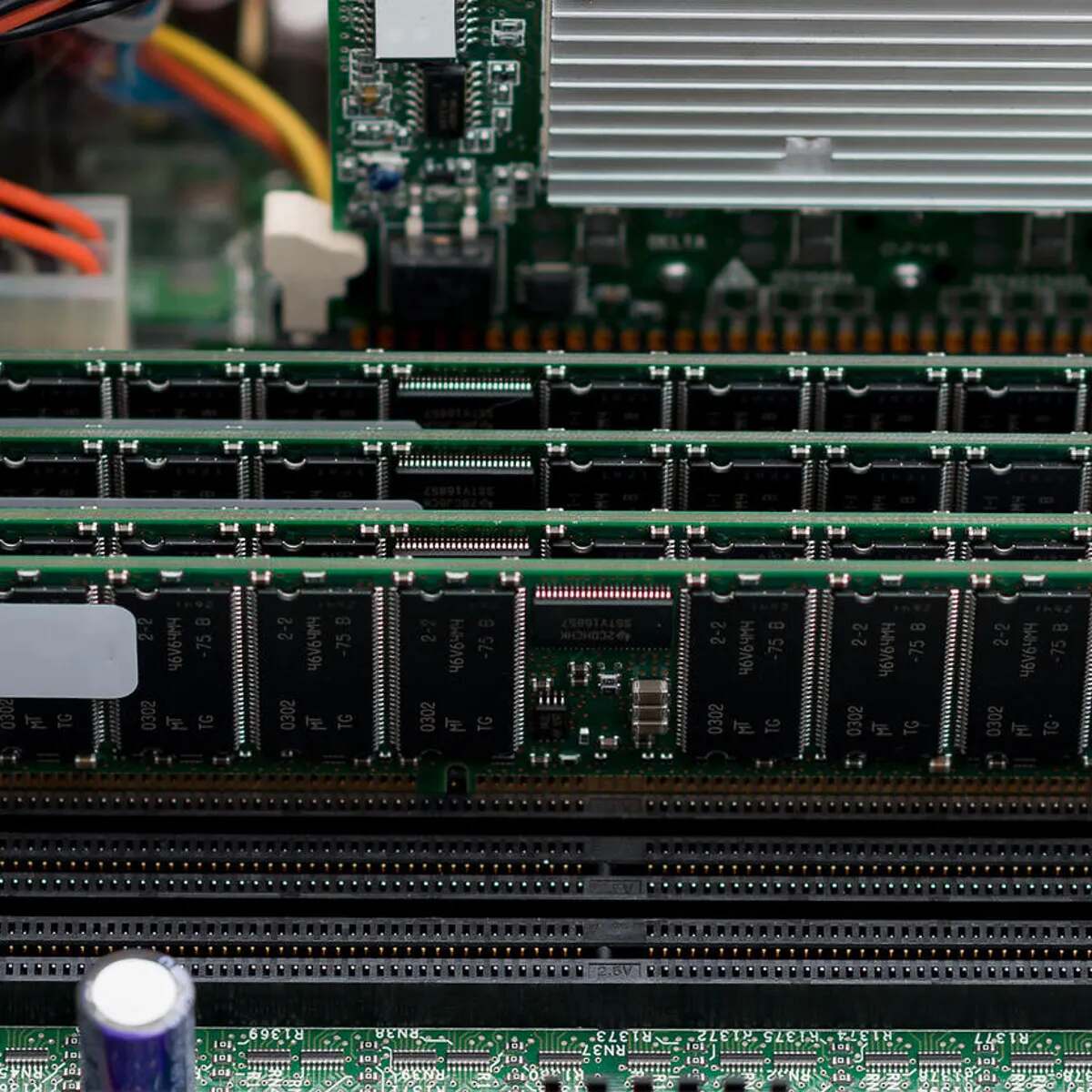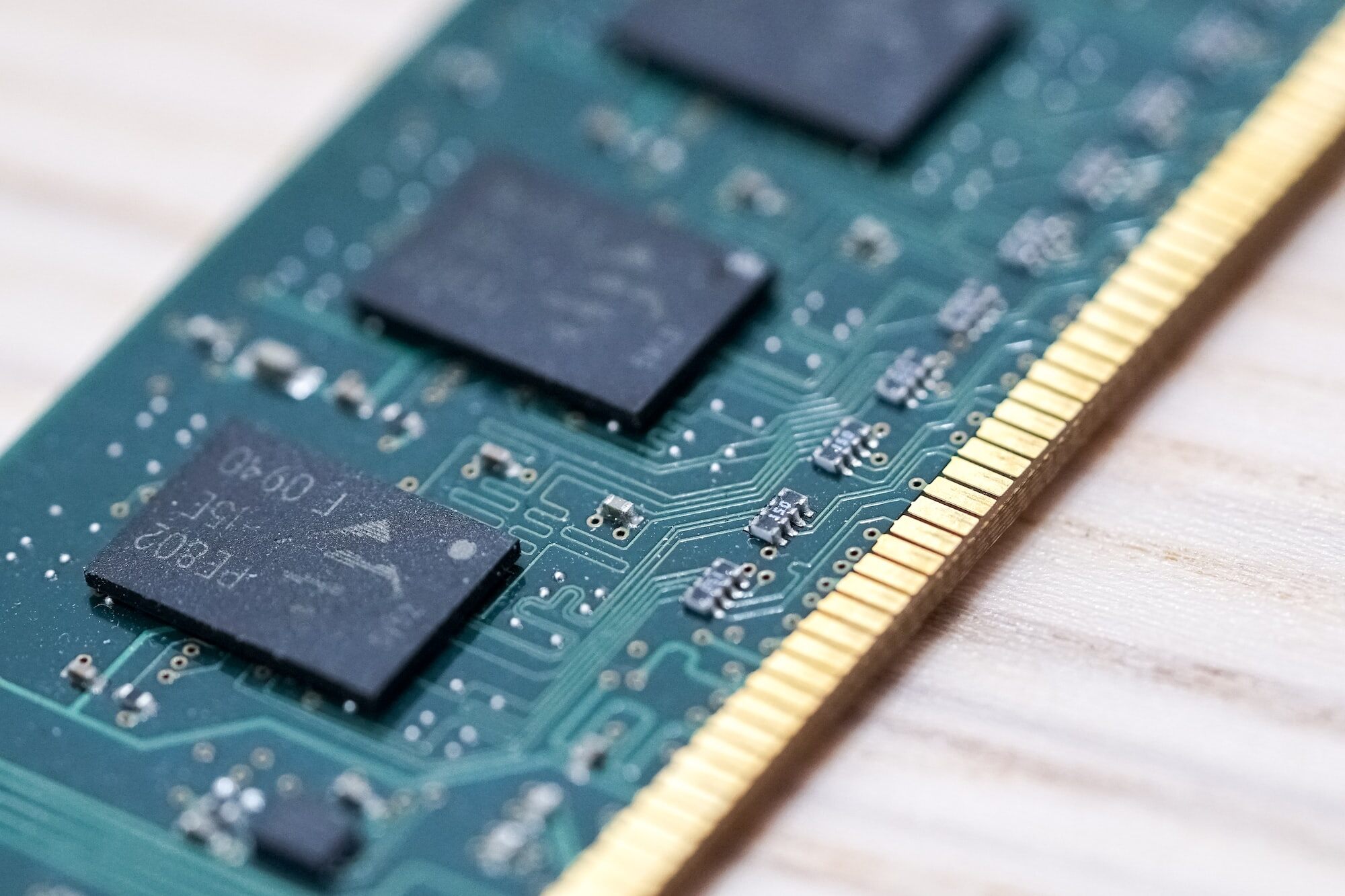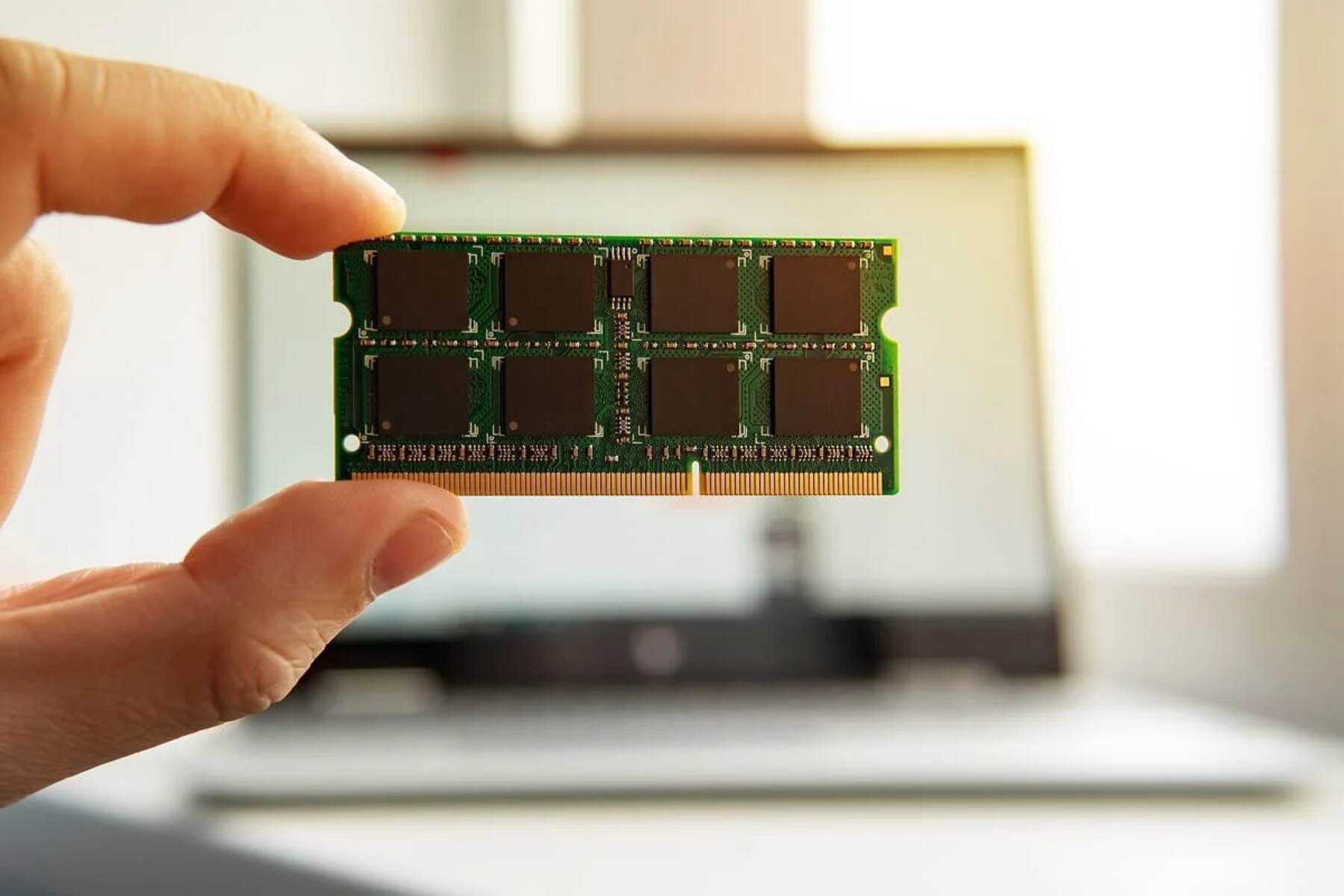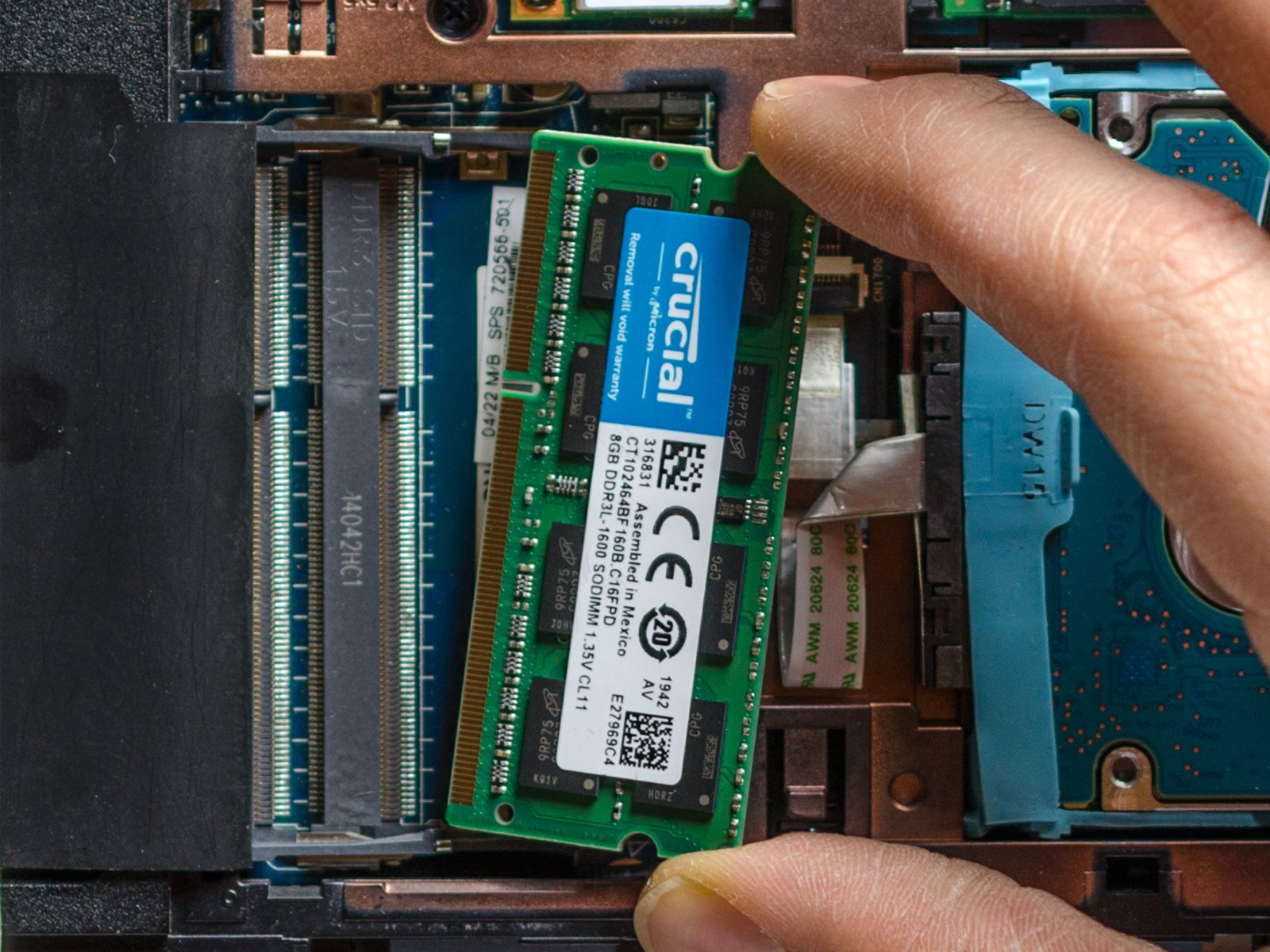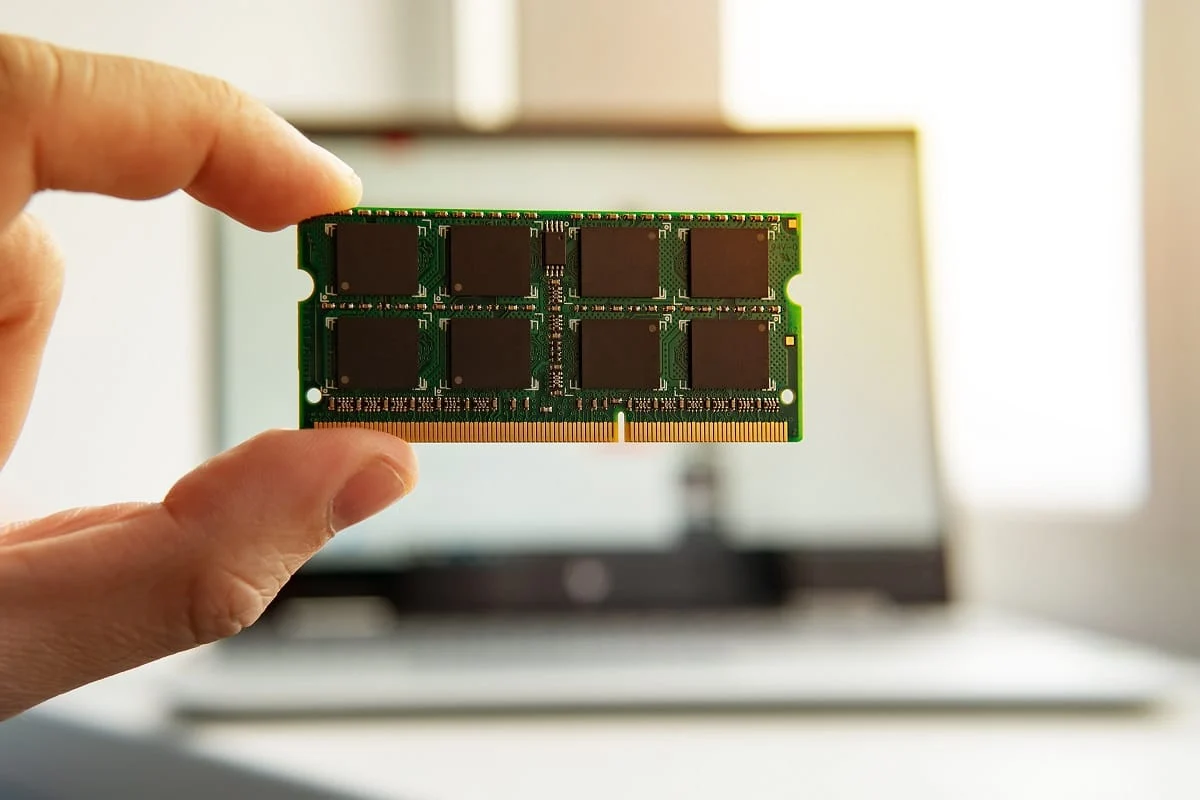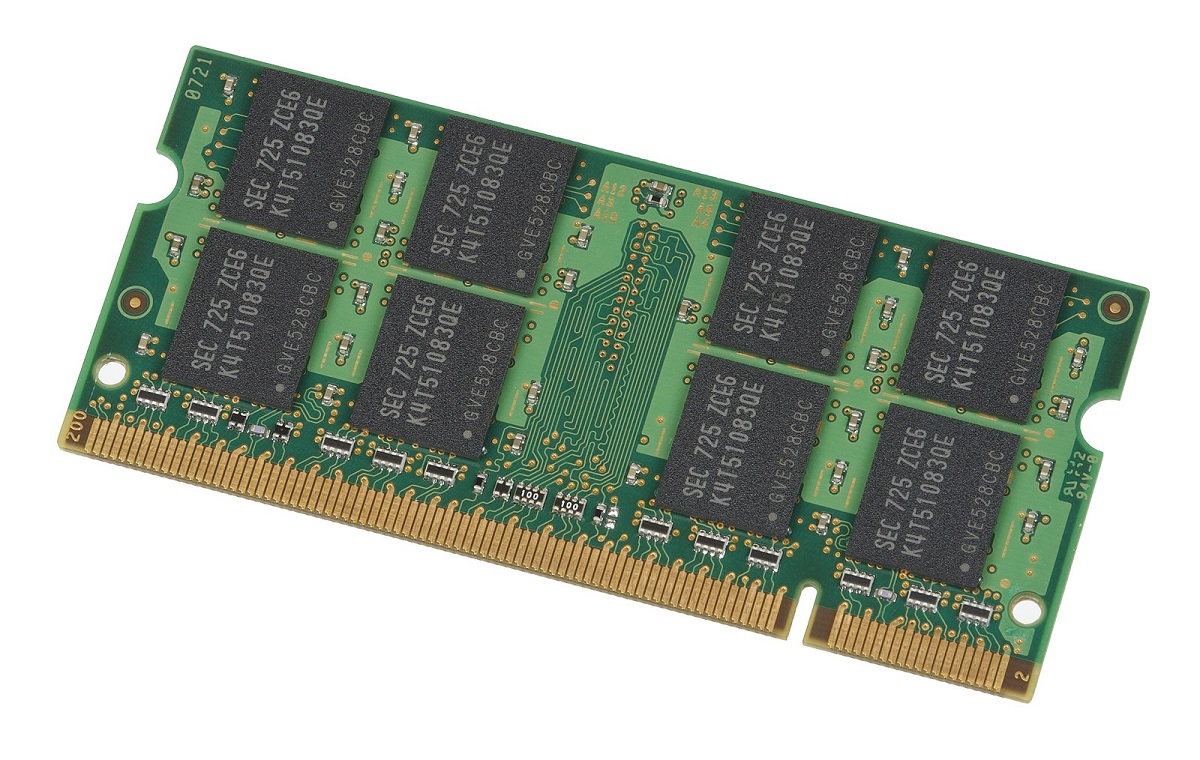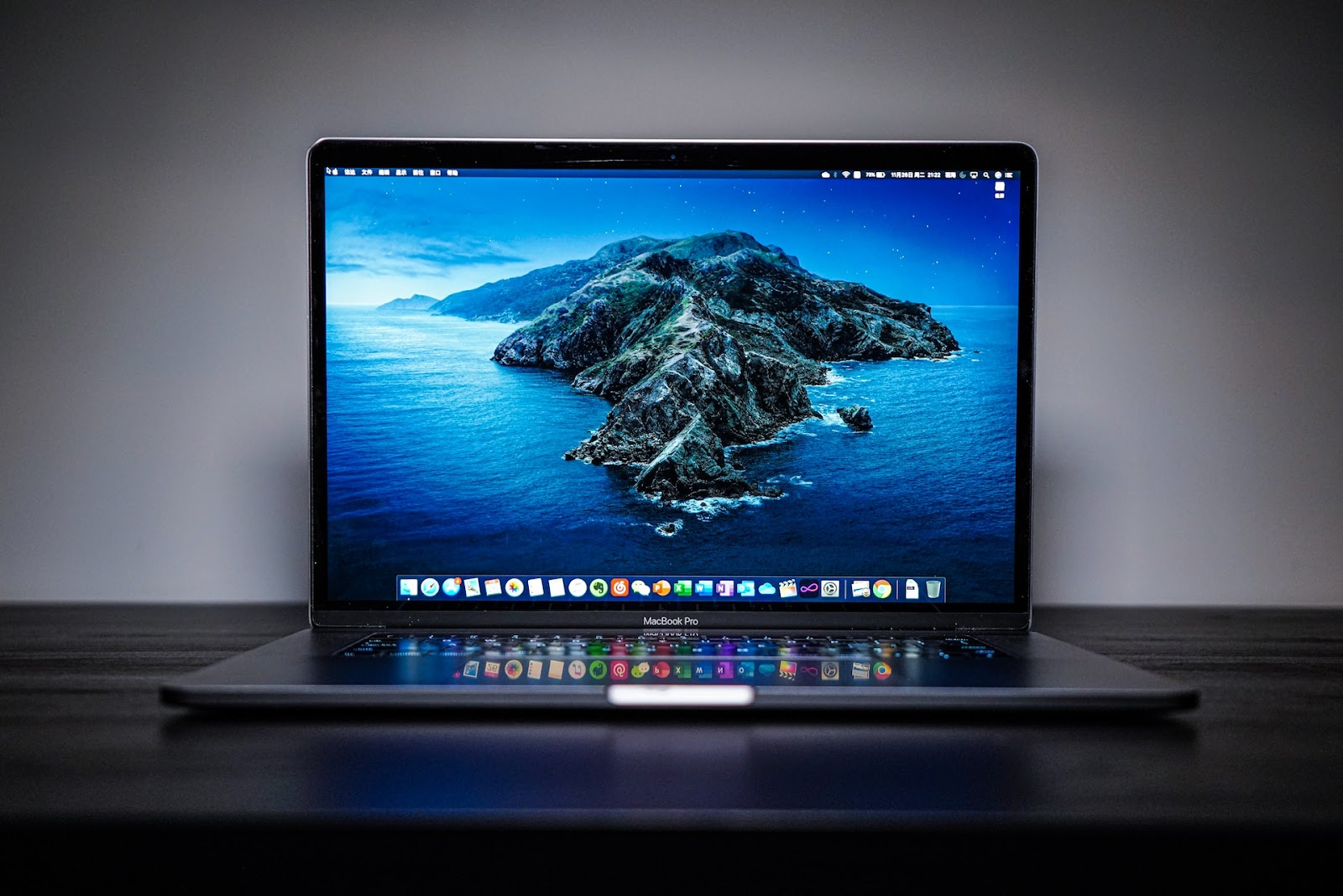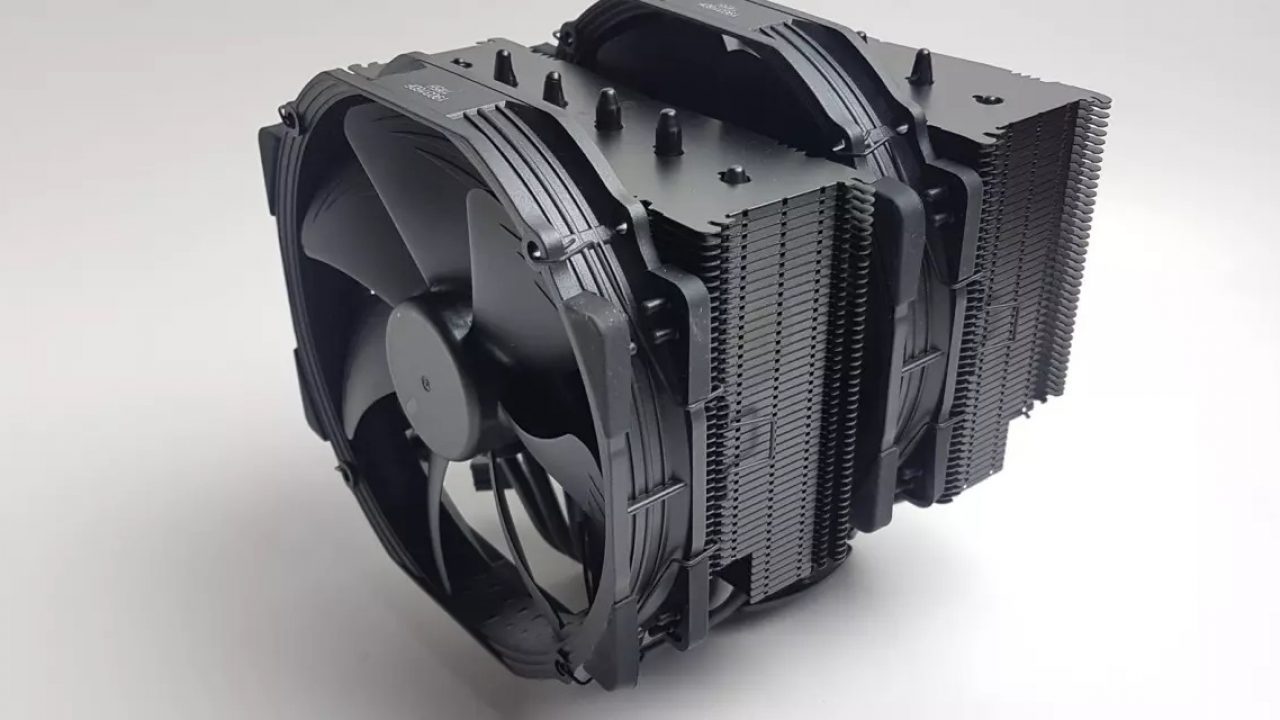Introduction
Welcome to the digital era where technology has become an integral part of our lives. One of the most fundamental components of any computer system is RAM (Random Access Memory). Whether you’re playing games, editing videos, or simply browsing the web, RAM plays a crucial role in ensuring smooth and efficient operations.
Windows 10, the latest version of Microsoft’s operating system, is known for its powerful performance and user-friendly interface. However, like any other software, Windows 10 requires a certain amount of RAM to function optimally. Understanding how Windows 10 utilizes RAM is essential for users looking to maximize their system’s performance.
In this article, we will delve into the details of how Windows 10 utilizes RAM when the system is idle, and explore the factors that influence RAM usage. We will also provide useful tips on checking and optimizing RAM usage to enhance your Windows 10 experience. So, let’s dive in and explore the fascinating world of RAM usage in Windows 10!
What is RAM?
Before we explore how Windows 10 uses RAM, let’s first understand what RAM actually is. RAM, or Random Access Memory, is a type of computer memory that stores data that is actively being used by the computer. Unlike other storage devices, such as hard drives or SSDs, RAM is volatile, meaning it is temporary and loses its data when the computer is turned off or restarted.
RAM acts as a high-speed temporary storage space that allows the computer to quickly access and manipulate data, improving the overall performance and responsiveness of the system. It serves as a bridge between the CPU (Central Processing Unit) and the computer’s storage, enabling fast and efficient data transfer.
Think of RAM as a workspace for your computer. When you open an application or a file, it gets loaded into the RAM, allowing the CPU to access it more rapidly. The more RAM your computer has, the more data it can store and quickly access, which leads to smoother multitasking, faster application launches, and better overall performance.
RAM size is typically measured in gigabytes (GB) and can vary from a few gigabytes in budget computers to dozens of gigabytes in high-end systems. It’s important to note that RAM is different from storage capacity, such as the size of your hard drive or SSD, which is used for long-term data storage.
Now that we have a basic understanding of what RAM is and why it’s important, let’s take a closer look at how Windows 10 utilizes this crucial component.
How Does Windows 10 Use RAM?
Windows 10 is designed to efficiently manage and utilize RAM to ensure smooth and responsive performance. When you start your computer, Windows 10 loads various processes and programs into RAM to make them readily available for quick access. These processes include the operating system itself, background services, and any startup applications.
Windows 10 uses RAM in several ways:
- Operating System Functions: Windows 10 allocates a portion of RAM to handle essential system functions, such as managing hardware drivers, file system operations, and network communications.
- Running Applications: Each application you open in Windows 10 requires a certain amount of RAM to operate. The more applications you have running simultaneously, the more RAM is utilized. Windows 10 allocates RAM to each application based on its requirements.
- Caching: To improve overall system performance, Windows 10 utilizes a feature called caching. Caching involves storing frequently accessed data in RAM to reduce the need to retrieve it from slower storage devices, such as hard drives. This allows for faster access to frequently used files, resulting in enhanced responsiveness.
- Virtual Memory: In addition to physical RAM, Windows 10 also uses a portion of the hard drive or SSD as virtual memory. Virtual memory acts as an extension of RAM, allowing the system to temporarily store data that doesn’t fit in the available physical RAM. When RAM reaches its limit, Windows 10 swaps out less frequently used data to virtual memory to free up space for more critical processes. However, using virtual memory is slower compared to accessing data directly from RAM, so having sufficient physical RAM is beneficial for optimal performance.
By utilizing RAM in these ways, Windows 10 aims to strike a balance between ensuring efficient system operations and providing a responsive user experience. However, the amount of RAM needed by Windows 10 can vary depending on several factors.
RAM Usage By Windows 10 When Idle
When your computer is idle, meaning you are not actively running any applications or performing tasks, Windows 10 still uses a certain amount of RAM for essential background processes and system maintenance. While the specific amount of RAM usage can vary depending on your system configuration and installed software, it is generally minimal.
On a freshly installed and updated Windows 10 system, the idle RAM usage typically ranges from 1 to 2 gigabytes (GB). This includes the RAM required to maintain essential system processes, such as the operating system itself, background services, and scheduled tasks.
Windows 10 continuously runs various system services in the background to ensure smooth operation, such as Windows Defender for antivirus protection, Windows Update for keeping your system up to date, and other essential services. These services collectively consume a small portion of your RAM even when you are not actively using your computer.
Another factor that contributes to RAM usage when idle is the presence of system tray icons or widgets provided by certain software. Some software may add extra processes or modules that run in the background, using a small portion of RAM. Keep in mind that this usage is often negligible and does not have a significant impact on system performance.
It’s important to note that as you install more software and perform more tasks on your computer, the RAM usage may increase even when idle. This is because certain software may have background processes that run continuously, using a portion of your RAM for functions like syncing, updating, or checking for notifications.
If you find that your computer’s RAM usage when idle is unusually high or continues to increase over time, it may be worth investigating any unnecessary or resource-intensive programs running in the background. Closing unused applications and disabling unnecessary startup programs can help reduce idle RAM usage and improve overall system performance.
Now that we have an understanding of how Windows 10 uses RAM when idle, let’s explore the various factors that can affect RAM usage in Windows 10.
Factors That Affect RAM Usage
RAM usage in Windows 10 can be influenced by several factors that determine how much memory is allocated to different processes and applications. Understanding these factors can help you optimize your system’s RAM usage and ensure optimal performance. Here are some key factors that affect RAM usage in Windows 10:
- Number of Open Applications: The more applications you have running simultaneously, the more RAM will be allocated to them. Each application requires a certain amount of memory to operate efficiently, so having numerous open applications will increase RAM usage.
- Size and Complexity of Applications: Applications with larger file sizes or complex functionality generally require more RAM to run smoothly. Graphics-intensive programs, video-editing software, and games, for example, can consume a significant amount of RAM to handle the processing and rendering of complex visuals.
- Background Processes: Windows 10 runs background processes and services that carry out tasks essential for system functioning. These processes, such as antivirus scans, system updates, and indexing, contribute to RAM usage even when you’re not actively using your computer.
- Browser Tabs and Extensions: If you’re a heavy internet user, keep in mind that each open tab in your web browser consumes additional RAM. Additionally, certain browser extensions and plugins can use up extra memory, so it’s advisable to only install and enable the ones you truly need.
- Resource-Intensive Software: Certain software, such as video editing suites, 3D modeling tools, and virtual machines, require substantial amounts of RAM. Running these resource-intensive applications can significantly impact RAM usage, so consider upgrading your RAM if you frequently use such software.
- Operating System Updates and Patches: Windows 10 periodically releases updates and patches to improve system stability and security. These updates can introduce new features, bug fixes, and compatibility improvements, but they may also result in increased RAM usage as the system incorporates the changes.
It’s worth noting that the impact of these factors on RAM usage may vary depending on your specific system configuration, including the amount of RAM installed and the available processing power. It’s always a good practice to monitor your computer’s RAM usage regularly to identify any unusual or excessive usage that may indicate a problem or the need for additional resources.
Now that we’ve explored the factors that affect RAM usage in Windows 10, let’s move on to the next section to learn how you can check the RAM usage on your computer.
How to Check RAM Usage in Windows 10
Checking the RAM usage in Windows 10 is simple and can provide you with valuable insights into how your system is utilizing its memory resources. Here are a few methods to check your RAM usage:
- Task Manager: The Task Manager is a built-in Windows utility that allows you to monitor and manage running processes, including RAM usage. To open Task Manager, right-click on the Taskbar and select “Task Manager.” In the Task Manager window, go to the “Performance” tab and click on “Memory.” Here, you’ll see real-time information about your system’s RAM usage, including how much memory is being used, cached, and available.
- Resource Monitor: The Resource Monitor provides a more detailed view of your system’s resource usage, including RAM. To open the Resource Monitor, you can search for it in the Windows search bar or access it through the Task Manager by clicking on the “Performance” tab and then on “Open Resource Monitor.” In the Resource Monitor window, go to the “Memory” tab to view information about your system’s RAM usage, including processes that are utilizing the most memory.
- Third-Party System Monitoring Tools: There are numerous third-party tools available that provide more advanced monitoring and analysis of your system’s RAM usage. These tools often offer additional features, such as historical data, customizable alerts, and more detailed insights into resource consumption. Some popular options include HWiNFO, CPU-Z, and Speccy.
By regularly monitoring your system’s RAM usage, you can identify any excessive usage or potential performance issues. This information can help you make informed decisions, such as closing unnecessary applications or upgrading your RAM to improve system performance.
Now that we’ve learned how to check RAM usage in Windows 10, let’s move on to explore the optimal RAM size for running Windows 10 smoothly.
Optimal RAM Size for Windows 10
Choosing the right amount of RAM for your Windows 10 system is crucial for ensuring smooth performance and responsiveness. While the optimal RAM size can vary depending on your specific needs and usage patterns, there are some general recommendations to consider.
For most average users, 8GB of RAM is typically sufficient to run Windows 10 smoothly. This amount of RAM provides enough headroom for multitasking, web browsing, running productivity applications, and even light gaming. It allows for a comfortable user experience without significant performance bottlenecks.
If you are a power user or engage in more demanding tasks, such as video editing, graphic design, or extensive multitasking, it is advisable to consider upgrading to 16GB or even 32GB of RAM. Having more RAM allows your system to handle resource-intensive applications and processes more efficiently, reducing the chances of slowdowns or performance issues.
It’s important to note that while having more RAM can be beneficial, it may not necessarily translate into better performance if other hardware components, such as the CPU or storage, are limiting factors. It’s essential to ensure that your overall system configuration, including the CPU and storage speed, is well-balanced to maximize performance.
In addition to the RAM size, the RAM speed, also known as RAM frequency, can also impact performance. However, the difference in real-world performance between different RAM speeds is often minimal, except in specific scenarios such as gaming or certain professional applications. It’s generally recommended to prioritize having sufficient RAM capacity over focusing solely on the RAM speed.
Ultimately, the optimal RAM size for your Windows 10 system depends on your specific usage requirements and budget. If you’re unsure about the right amount of RAM for your needs, it’s always helpful to consult with knowledgeable professionals or refer to the recommendations provided by software developers for the applications you frequently use.
Now that we have discussed the optimal RAM size for Windows 10, let’s move on to some tips on how to reduce RAM usage to optimize your system’s performance.
Tips to Reduce RAM Usage in Windows 10
Reducing RAM usage in Windows 10 can help improve system performance, especially if your computer has limited memory capacity. Here are some tips to help you optimize RAM usage:
- Close Unnecessary Programs and Processes: Close any programs and background processes that you’re not actively using to free up RAM. Use the Task Manager to identify resource-heavy processes and terminate them if they are not necessary.
- Disable Startup Programs: Many programs automatically start when your computer boots up, consuming valuable RAM. Use the Task Manager or the Startup tab in the Task Manager to disable unnecessary startup programs and reduce RAM usage.
- Manage Browser Extensions: Limit the number of extensions or plugins installed in your web browser. Each extension can consume additional RAM, so only keep the ones that you truly need for your browsing experience.
- Use Lightweight Applications: Consider using lightweight or alternative applications that consume less RAM. For example, replace resource-intensive software with lighter alternatives or opt for web-based applications whenever possible.
- Optimize Visual Effects: Windows 10 includes various visual effects, such as animations and transparency, which can consume RAM. Adjusting these visual effects or disabling them altogether can free up system resources, including RAM.
- Manage Virtual Memory: By default, Windows 10 manages virtual memory automatically. However, you can manually adjust the virtual memory settings to optimize RAM usage. Allocate a fixed size for the virtual memory rather than using a dynamic setting, as it can reduce fragmentation and improve performance.
- Keep Your System Updated: Regularly installing Windows updates and patches can help improve system stability and optimize resource usage, including RAM utilization.
By implementing these tips, you can effectively reduce RAM usage in Windows 10 and ensure that your system operates more efficiently. However, it’s important to balance RAM optimization with your specific needs and usage patterns to avoid compromising overall performance.
Now that we’ve explored ways to reduce RAM usage in Windows 10, let’s conclude our discussion.
Conclusion
In conclusion, understanding how Windows 10 uses RAM is essential for optimizing system performance and ensuring a smooth user experience. RAM serves as a temporary storage space for actively used data, allowing for quick access and efficient processing by the CPU.
Windows 10 effectively manages RAM usage by allocating memory to essential system functions, running applications, caching frequently accessed data, and utilizing virtual memory as needed. However, several factors can influence RAM usage, such as the number and complexity of open applications, background processes, browser tabs, and resource-intensive software.
Checking RAM usage in Windows 10 can be done through tools like Task Manager or Resource Monitor. Monitoring RAM usage helps identify excessive usage and potential performance issues, enabling you to take appropriate measures like closing unnecessary applications or upgrading your RAM size if needed.
The optimal RAM size for Windows 10 depends on individual needs, but 8GB is generally suitable for most users. Power users or those engaging in resource-intensive tasks may benefit from upgrading to 16GB or more. It’s important to balance RAM size with other hardware components for optimal performance.
To reduce RAM usage in Windows 10, closing unnecessary programs and processes, disabling startup programs, managing browser extensions, using lightweight applications, optimizing visual effects, and managing virtual memory are effective strategies. Keeping your system updated also helps improve performance and optimize resource usage.
By following these tips and understanding the dynamics of RAM usage in Windows 10, you can optimize your system’s performance, enhance multitasking capabilities, and ensure a smooth and responsive computing experience.







